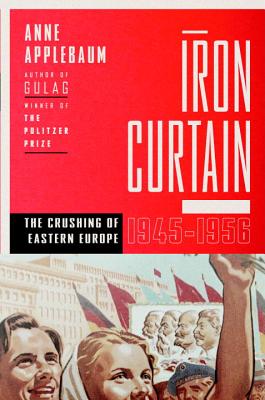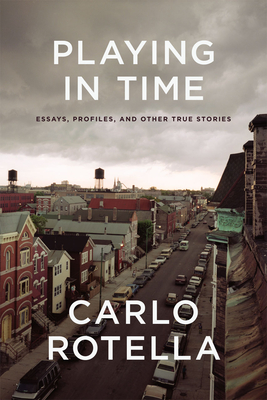Now I know what you're thinking: isn't it cheating to mash together three would-be separate lists under the banner of one blog post? And to that I say, isn't it then cheating each time Girl Talk releases a new album? Wasn't it cheating when Stalin bullied the Baltic Nations into "joining" The Soviet Union? What about when you park in the 15 minute spot in front of a business you have no intention of even pretending to browse in? I'm not riffing there, that's an actual question. The answer, on the other hand, is even slightly less complex: not if you haven't read any of the books, it isn't! But before you roll your eyes and go looking up legitimate responses to the following books elsewhere, let me just say that I have friends who read these books. Heck, I even have advance reading copies of one or two of them at home, underneath my broken typewriter and thing you put the bourbon in. And if the thing you put the bourbon in isn't enough to convince you that I have every right to advertise and sell you on these books, then you should know that Gary Shteyngart does it, too.

Piggybacking then on the strength of my otherwise ill-suited reference to Communism, allow me to type Iron Curtain, Anne Applebaum's study of Eastern Europe after World War II, and more specifically the upheaval and impact of Communism's sweep on those at the center, yet farthest removed from its plot. The writing on the wall, you might say, is the subject of Red Plenty (think The Hobbit, unless you've actually read it) Francis Spufford's historical novel-like theme park of a dream turned nightmare that David described as a "funny and moving examination of Soviet-era economics." Who knew? That economics could be funny, I mean. Not that it could be examined. I don't even want to pretend to feign interest in whatever that may or probably doesn't involve. Now back in line, hands to yourself, we've got four more books to talk about and very little to say about any of them.
 Creation narratives are always in style, I suspect, because writers have difficulty coming up with anything else half as good as the original. That said, most creation myths end up putting their creations in a potentially hostage-like situation, in which, if the myth isn't allowed to blather on about its role in shaping its creation's "destiny," like an estranged father who would like to say a few words before the DJ gets on with the introductions, then the final outcome--that event or personality--we the reader have already committed our belief in and satisfaction with, may as well get vacuumed back in time and not exist, and too give back the $25 in dubious stock options it had waiting for him back at the hotel. Which is not to say that The First Four Notes: Beethoven's Fifth and the Human Imagination, by Matthew Guerrieri is a stupid idea for a book. In fact, I might just read this one if I ever make it through that pile holding up my antique writing desk.
Creation narratives are always in style, I suspect, because writers have difficulty coming up with anything else half as good as the original. That said, most creation myths end up putting their creations in a potentially hostage-like situation, in which, if the myth isn't allowed to blather on about its role in shaping its creation's "destiny," like an estranged father who would like to say a few words before the DJ gets on with the introductions, then the final outcome--that event or personality--we the reader have already committed our belief in and satisfaction with, may as well get vacuumed back in time and not exist, and too give back the $25 in dubious stock options it had waiting for him back at the hotel. Which is not to say that The First Four Notes: Beethoven's Fifth and the Human Imagination, by Matthew Guerrieri is a stupid idea for a book. In fact, I might just read this one if I ever make it through that pile holding up my antique writing desk. Asking whether the first four notes, the "bum-bum-bum-BUM!!!," of Beethoven's seminal and wildly lampooned fifth symphony were themselves instrumental in determining the musical tastes of various cultures, meritocracies, and classic episodes of Looney Tunes for years to come is about as slippery a slide to let fall and clang against the concert hall floor in the middle of an otherwise total success of a eighth grade recital as asking how Beethoven arrived at said notes in the first place. (For pete's sake, wasn't he deaf or missing an eye or something?) Yet Guerrieri tries his hand at playing both ends of an alluring, however avoidable string of unknowns, in effort to lay breads crumbs, if not claim, to the genesis of the immortal German composer's genius.
The limitations of storytelling, in general, are in many ways the subject of Carlo Rotella's Playing in Time, a book I did not pick only because its title makes reference to music. Ridiculous. Phff! I'm not even going to respond to that... No, but seriously, turns out Rotella's essays are, thank God, occasionally about music, as well as boxing past one's prime, dancing in Chicago, just outside of its second hardest to find airport (Maybe it's just me, but how can you be "Departing" and know-to-be-in-that-lane if you just got there?) and living, in general, a life hampered or enlivened by constraint.

Which must be what film critic David Denby was forced to do for several years before joining the staff of The New Yorker and making Anthony Lane look like the Martin Short of film criticism. (You see, Martin Short is considered one of the funniest and most kind comedians in the business, whereas David Denby, some would say, is Ice-Cold!) Regardless, however, what you might think of Denby's demeanor and penchant for finding the worst in most things, especially (and curiously) those things we call films, Do The Movies Have a Future?, like Gabriele Pedulla's In Broad Daylight, is a worthwhile look back on and forward to film's place in popular culture, in an era defined by iPads and the increasing distribution of what are, admittedly, some of the poorest excuses for car explosions in the last half century. Denby, in addition, looks back at the work of Pauline Kael, the great 20th century film critic for The New York Times, whose new biography has just come out in paper, perhaps to think about what movies used to be or see more clearly what they are; perhaps for guidance in how to write a review without, in essence, wishing 10 years of bad luck on an actor and his family. One thing is certain, as movies, books, and a leather-bound set of unused, month-by-month journals can all attest to: it's good to be alone.

No comments:
Post a Comment